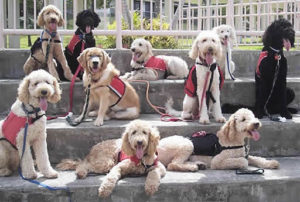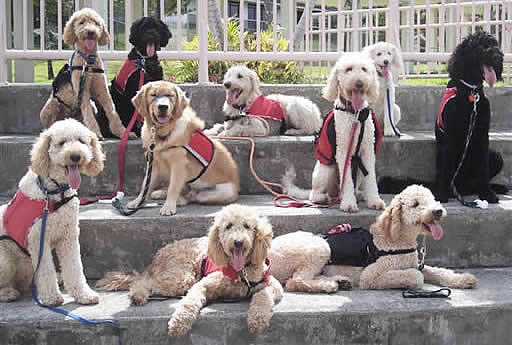How owners can navigate the growing demand for service animal accommodation
Service animals are a great benefit to those with a disability, providing intellectual, mental, sensory or physical support to help their owner navigate the world. However, learning how to accommodate service animals in housing, especially in “no pet” properties, and can be confusing.
The laws reflected in the federal Americans with Disabilities Act (ADA) relates to service animals in public places, including hotels.
 Federal ADA regulations state that only specific types of animals such as dogs and miniature horses may be used as service animals. Under the ADA, owners of public accommodations are not required to allow emotional support animals, only service animals. In public circumstances where only trained service animals are allowed, such as a business, a person representing the business may only ask 2 questions.
Federal ADA regulations state that only specific types of animals such as dogs and miniature horses may be used as service animals. Under the ADA, owners of public accommodations are not required to allow emotional support animals, only service animals. In public circumstances where only trained service animals are allowed, such as a business, a person representing the business may only ask 2 questions.
- Is this a service animal?
- What type of service does this animal perform?
However, housing law, including rentals in condominiums and houses, is different. The Federal Fair Housing Act (FHA) is broader. Those laws provide for accommodations for “assistance animals” which include service animals, but can also include support animals, therapy animals, and comfort animals. ANY type of animal may qualify.
Under housing law, a person with a disability has the right to request a reasonable accommodation that is not limited to the use of a service animal, but also may more broadly request the use of an assistance animal that works, assists, provides emotional support, or performs tasks for a person with disability.
In Minnesota, when a prospective tenant asks for accommodation for a service animal, such as allowing an animal in a property with a “no pet” policy, they can be asked what service the animal performs. A tenant may also be asked to provide a medical certificate to accompany the service animal. If a medical certificate accompanies the animal, the landlord cannot discriminate against the applicant and cannot collect a pet deposit on the service animal. However, if the service animal damages the rental unit, the tenant can be charged.
There are a growing number of working animals in the U.S., mostly comprised of dogs. The American Humane Society estimates there are at least 20,000 legitimate service dogs. In addition, there is a sharp rise in “emotional support animals.” At this time, there is no certification or official national registry of service or support animals.
In April, the Minnesota Legislature passed a law making it illegal to fraudulently represent an untrained dog as a service animal. However, this new law in no way changes the provisions or protections for persons with disabilities utilizing service and assistance animals in housing.


